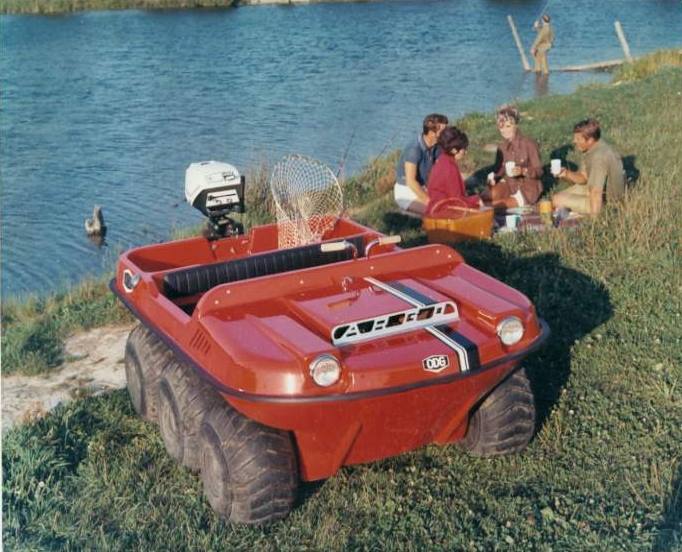First Aid for Off-Roading: What to Pack in Your XTV

If you look at any off-road packing list or guide, you’ll see a first aid kit listed as a necessary item. This leaves a lot of questions. What exactly needs to be in this first aid kit? Are there items you should be packing that aren’t in a standard kit? Should you set up your kit differently since you’re traveling in an Argo? Here are the answers to these questions and more.
What Items Do I Need in My First Aid Kit?
Your first aid kit should contain everything you need to treat burns, cuts, scrapes, sprains and strained muscles. Splinters and poisoning from bites and stings are also likely depending on where you’re going. A good place to start building your kit is with the Red Cross’ recommendations for a family of four:
– 25 adhesive bandages in a range of sizes
– 5 packets of antibiotic ointment
– 5 4×4 inch sterile gauze pads and 5 3×3 inch pads
– 5 antiseptic wipe packets
– 2 packets of aspirin. Substitute another pain medicine if someone on your trip has an allergy.
– 2 5×9 inch absorbent compression dressings
– 2 pairs of non-latex gloves. Make sure you have at least one pair to fit everyone on your trip.
– 2 packets of hydrocortisone ointment packets
– 2 triangular bandages
– 1 heat-reflective “space” blanket
– 1 30 foot x 1-inch roll of adhesive cloth tape
– 1 pair of tweezers
– 1 pair of scissors, preferably EMT shears. These have blunt ends, letting you cut safely near skin.
– 1 breathing barrier with a one-way valve
– 1 oral thermometer
– 1 3 inch wide roller bandage and 1 4 inch wide bandage
– 1 instant cold compress
– 1 first aid instruction booklet. While there’s more to first aid than can be squeezed into a few pages, a basic booklet will give you the most needed information in a size that fits into your kit.
There are a few questions you should answer to fill in the gaps in your kit:
– Is anyone on your trip taking medications? Be sure to pack some extras separate from the user’s main supply.
– Does anyone in your group have allergies or conditions that may cause problems on your trip? Write these down on a paper packed with your kit, so you can reference them when talking to medical personnel.
– Will you be at high altitudes? While you can’t get acetazolamide over-the-counter, ibuprofen has been shown to help with the headaches associated with altitude sickness.
– Are you operating in extreme cold? Pack extra blankets. These can replace wet clothing to help people affected by frostbite and hypothermia warm up.
Packaging Your First Aid Kit
Most pre-packaged kits come in a standard plastic or canvas bag. That’s fine for most users, but if it’s in the back of your Argo, it’s probably going to get wet. Instead, store your kit in a waterproof container.
It may be easier to separate your medical equipment into a primary first aid and a “boo boo bag” for minor problems. This small container can hold commonly needed items like pain killers, bandages, OTC medicines and tools for removing splinters.
Hopefully, you’ll never need to use your kit. However, if you aren’t using it, some of those items are going to go bad. Make a list of items and their expiration dates, and keep it in the top of your kit. That way you can tell at a glance what needs to be replaced before your next trip.
How Do I Use All This Stuff?
Bring some first-aid literature with you on your phone. The Red Cross has a smartphone app with an offline mode. This lets you download the complete guide onto your phone, so you don’t need cell reception to get information. Likewise, the Offline Survival Manual app downloads to your phone, providing you with tips for surviving while you wait for rescue. There are also wilderness-specific books like Dr. Paul S. Auerbach’s “Medicine for the Outdoors.” While you may not want to lug around a 600-page book, you can keep an ebook version on your phone for reference.
Any first aid class will improve your care skills, but you also have the option of wilderness-specific training. If you want to go this route, consider taking a NOLS Wilderness First Aid training course. They offer a range of options including basic first aid, specialty classes on common outdoor injuries, and complete wilderness first responder training.
Gear Up for Your Next Adventure
Shank’s Argo might not sell medical supplies, but we do carry everything else you need to outfit your Argo XTV. We offer OEM parts and accessories, and we can fit those accessories and make repairs to your vehicle. Looking to buy an amphibious ATV? We keep a range of models in stock. Visit our showroom at 4900 Molly Pitcher Highway in Chambersburg, PA, or check out our website, www.shanksargo.com.
